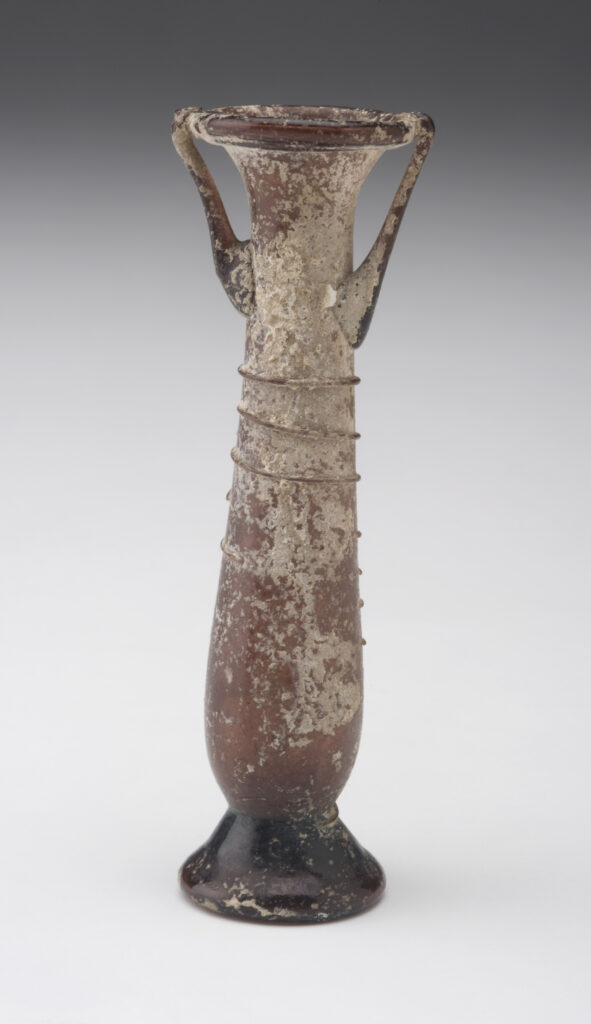Cosmetic Flask (work of art)
Información sobre la obra de arte
Acerca de
Ideas clave sobre esta obra de arte
- This small glass vessel has a flat base and a slender body with two handles. The dark purple flask is decorated with a thread of glass that spirals around the narrow neck. This flask was used to store cosmetics.
- Ancient Roman cosmetics included products like oils, perfumes, and unguents (salves or ointments). Cosmetics came in solid, powdered, or liquid form. Tube-shaped flasks like this one would have been used to hold viscous, or powdered, cosmetics.
- This flask is made of blown glass. Glassblowing technology was invented during the first century BCE. This process involved blowing air into a piece of heated glass to inflate it. The maker would have spun or rolled the molten glass to form a desired shape.
- Small bottles and tubes for cosmetics were commonly produced glassware in the Roman world. These vessels had been used as containers for cosmetics since the Late Bronze Age.
Más información
Glass was widely produced during the time of the Roman Empire. The invention of glassblowing technology made it possible to produce glassware faster. Glass makers used a metal pipe to blow air into a piece of heated glass, to inflate it. They used air and different tools to shape the molten (liquefied) glass. Glassblowing required less glass material than other techniques, which made it more efficient.
Glassblowing was developed near the beginning of the Roman Empire (27 BCE through 476 CE). Glass makers relied on long-distance trade throughout the Roman Empire. It gave them access to the materials they needed to produce glass products. Innovations in glass making made it possible for glass makers to create both simple and luxury glassware. Most middle-class Romans could afford to buy simple glassware.
Small glass vessels were some of the earliest objects produced with the new technology of glassblowing. These vessels included containers for cosmetics, perfumes, oils, and medicines. Small vessels used for cosmetic purposes are often referred to as unguentaria. One of the common forms of unguentaria is the tube-shaped bottle, like the Cosmetic Flask. Ancient Romans produced a variety of cosmetics and stored them in flasks like this one.
Many large cities had markets where perfumes and cosmetics were sold. Oils and perfumes were often used in the cosmetic routines of the Romans. Rouge was widely used by Roman women. The pigment (a substance that gives color to other materials) that was used in rouge came from vegetable dyes. Pigments extracted from vegetables, minerals, or animals were sometimes used as hair dye. Cosmetics for the eyes included kohl, which was made from ingredients like soot and ashes. Powdered kohl was applied to the eye area with a stick made from wood, glass, or bone.
Recursos adicionales
Recursos para los profesores:
- Watch a video about the history of Roman cosmetics.
- Read an article about glass production in the Roman world.
- Watch a video about the invention of early glassblowing.
Recursos para los estudiantes:
- Watch a video about another Roman technique in glassmaking.
- View a similar object at the Metropolitan Museum of Art.
- Read an article about Roman glass.


